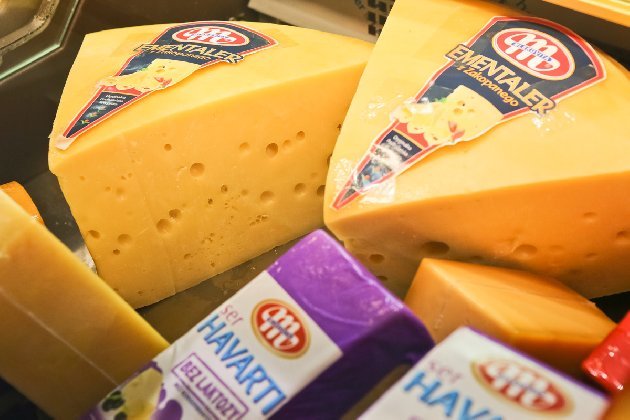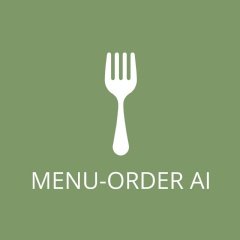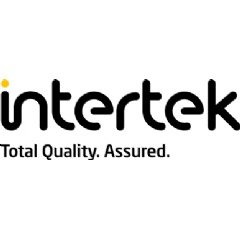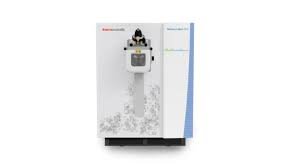Thursday, 13 November 2025
Polish food industry: Europe’s new growth engine
POLAGRA FOOD is the international trade fair for food that offers a preview of trends in a food industry POLAGRA FOOD 2019 just like every year saw a large group…

POLAGRA FOOD is the international trade fair for food that offers a preview of trends in a food industry
POLAGRA FOOD 2019 just like every year saw a large group of visitors with well-known brands of food products, food innovators in terms of taste and composition as well as exotic flavours from around the world. The exhibition saw the representation of companies from different sectors like fruits, vegetables, teas, drinks and alcohol. Out of all, dairy and meat processing industries were seen in the large number. Representation of traditional Polish food was also the highlight of the exhibition.
POLAGRA FOOD is the international trade fair for food that offers a preview of trends in a food industry. The fair is an important event for all people trying to develop their export potential. This food expo allows its participants to have a look at what food producers and distributors have to offer. The visitors can get to know the Polish food and the taste from all over the world.
The exhibition saw huge participation from food companies present around the world including 900 exhibitors from 36 countries. Majorly represented by Polish food companies, firms from Italy, Germany, Hungary, Malaysia, Switzerland, Spain, Turkey, the Netherlands, and South Korea were also seen. Italian food companies were seen in large number next only to local industry. Representation of various Polish associations like Polish Association of Butchers and Meat Processors, National Poultry Council and Polish Association of Ecological Producers and Processors was also seen.
The exhibition was clearly dominated by the Polish dairy and meat industries. Both the sectors were represented by many market leaders offering and displaying lots of regular and premier products like lactose-free cheeses, GMO-free products along with interesting and innovative cheese and meat snacks for the health conscious consumers.
Mass representation of the companies operating in the fruit and vegetable processing sectors producers of sweets, snacks, teas, drinks and alcohols was also visible. Showcased by entrepreneurs from 21 countries, representatives from Belarus, Egypt, South Korea, Romania, Turkey, Ukraine, Italy, Finland, Bulgaria, Germany, Hungary, Lithuania, Malaysia and Sri Lanka were seen.
FOOD SECTOR – AN OVERVIEW
Polish food products already have an established position in Europe which is evident from the fact that among 50 most prospective divisions of the Polish export, 14 belong to the food and agriculture sector.
Holding sixth place and 9% share in European Union food industry, Poland is one of the most dynamic food industries. Meat, milk processing, fruits and vegetables, sugar and secondary cereal processing are some of the most competitive sectors.
According to the forecasts of the International Monetary Fund, “Until 2021 the Polish economy will continue to develop at a rate of more than 3% per annum, which means that the purchasing power of The Poles will increase by an additional 20% over the next five years.”
Poland can be considered as one of the best locations of the food processing industry in Europe in terms of the natural environment, as best confirmed by the fast pace of growth of this industry in Poland in recent years considering the fact that 48% of Poland consists of farmland and over 36% of this is arable land.
POULTRY MARKET
Poland has a rich tradition of producing poultry and pork. With 16% of share in the production, it is the first producer of poultry in the European Union (EU) and 14th in the world with 2% of world production.
Rajmund Paczkowski, president, National Poultry Council-Chamber of Commerce said, “Poland is the biggest poultry producer in EU and farms that are mostly consist of chicken which stands for 88% of all of the poultry. All the technology meets all the standards of EU regulation which are held to very high standard. We produce around 1 million chickens a year. We also mass produce Goose and Turkey. Number of ducks and chickens are about 1 billion, 30 to 40 million Turkeys and 7 million Goose.”
The National Poultry Council – Chamber of Commerce in Warsaw has been established on March 11, 1998. Development and modernisation of Polish poultry industry and protection of interests of poultry farmers and producers and poultry meat processors, their integration, representation of the Polish poultry industry in contacts with the authorities and self-governments, and Polish and international organizations is the main aim of this council.
“All the farms are under the control of veterinary service which can always prefer to make quality check, quality of the food given to animals, water supply. Food for animals is prepared by special facility which meets the requirement of European Union. Last year we produced 2.8 million tonnes of poultry out of which 1 million was exported to mostly the countries in EU. Sales is all over the European Union however 20% of the total sale also go to the developing countries. Also, poultry products cover 0.7% of our GDP”, he added.
PORK MARKET
With 8% share in the production, Poland is fourth producer of pig meat in the European Union and 10th in the world with 2% of world production.
Polish Association of Butchers and Meat Processors in an interaction during the exhibition said, “We are the oldest and biggest organisation of our kind in Poland. When it comes to processed meat, Poland is an absolute leader. We make a lot of meat. Since the accession of the European Union, the export of our meat has gone up five times and we are striving to maintain this tendency and also increase it.”
Association of Butchers and Producers of Processed Meat of the Republic of Poland is the oldest organization working for the meat industry in Poland. The Association currently bands together 210 meat and meat product manufacturers and other companies operating on the meat market, which constitutes a quarter of the total number of Polish manufacturers.
According to the association, “When it comes to the production of livestock animals, meat and butcheries, we meet all the European standards including health safety and ethical standards. Also we applaud the highest standard when it comes to processing of meat. This is evident from the fact that quality of our products has been noticed by the people from abroad. Meat products cover 1.5% of our GDP.”
Talking about the training of young butchers, they said, “In order to become a butcher there are some procedures to follow. First step is the training. All companies have to have somebody with all the privilege of Mastery in Butchery who should be young with secondary schooling (around 15 years of age). They acquire the theory knowledge at School and practical in the companies. The training takes three years.”
The significant part of Polish meat production is conducted under various national food quality schemes like Pork Quality System (PQS), Food Quality Guaranteed System (QAFP) and Quality Meat Programme (QMP). These organizations ensure safety, taste qualities and high nutritional value of products by imposing strict conditions of production from animal breeding through stages of processing.
About 90% of beef produced by Poland is exported. Total production accounts for 500,000 tonnes. Talking about the milk market, Poland is the fifth producer of milk in European Union and 12th world producer. Total milk production in Poland is over 13 billion litres.
ORGANIC FOOD
With increasing health concerns, use of organic food is growing among people all over the world. According to Polish Association of Ecological Producers and Processors, “Organic food is quite a novelty in Poland. It is estimated that Polish food products that are organic in nature contribute about 5% of all grocery market. This is only about Polish products. Our organic food industry is over 5%. However we export many of our products to Germany.”
The Polish Ecology Association was established in 2006 and brings together producers who have started producing organic food with the belief that these products are more valuable to the human being. By acting on the fast-growing organic food market, members of the Association recognize that they are more connected than sharing. The dynamic development of organic farming brings with it many new challenges, which are more easily fulfilled by acting jointly within the Association.
It is a Non-profit organisation having 300 direct members and 3000 farmers. One of the greatest priorities of this organisation is education. Creating awareness among children about ecological food is the main focus of our organisation. Elena – offers lyophilized fruits and vegetables, Korab Garden; Eko- Aronia- producer of ecological juices and chocolates from chokeberry, blackcurrant, apples and juices; Bio Vege- offers fresh organic vegetables; Polskie Młyny-flour organic, organic pasta, organic pasta, ecological pasta are some of the member companies of this association.
“The Poles are very orthodox and traditional. Today with more emphasis on commerce and consumerism, we are facing many problems. This takes a toll on the quality of food. We are slowly moving towards the American problem of obesity. In Poland we have almost 20% of kids as obese. We want to create trends through which we can fight this phenomenon”, they added.
Apart from traditional products they also focus on innovation and technology. Technology of dry freezing fruits to make dry and crisp was the most interesting technology seen.
WAY FORWARD
Based on a strong mutual goodwill, relations between India and Poland have traditionally been close and friendly. Agreement between India and Poland was recently approved which covers various activities in the field of agriculture and allied sector including exchange of information on the current situation in agriculture, the phytosanitary conditions of crops, threats posed by harmful organisms and the threats posed by animal infectious diseases.
Technology
MENU ORDER AI to launch app aimed at GLP-1 users and health-conscious diners
Nov 10, 2025 | Company News
Harnessing Quantum AI for Greener Minds and Healthier Futures
Nov 10, 2025 | Interaction
Intertek acquires Costa Rican testing business Suplilab
Nov 07, 2025 | Company News
Food Testing
Intertek acquires Costa Rican testing business Suplilab
Nov 07, 2025 | Company News
Thermo Fisher Scientific launches Orbitrap mass detector for food safety testing
Oct 24, 2025 | Company News
ADM advances quality capabilities with opening of new Central Milling Laboratory
Oct 16, 2025 | Company News
More Popular
HEINEKEN opens new brewery in Brazil
Nov 12, 2025 | Beverages
Remilk and Gad Dairies introduce The New Milk in Israel
Nov 12, 2025 | Beverages
Ochre Spirits closes seed round led by Ah! Ventures to build next-gen beverage house
Nov 12, 2025 | Beverages





